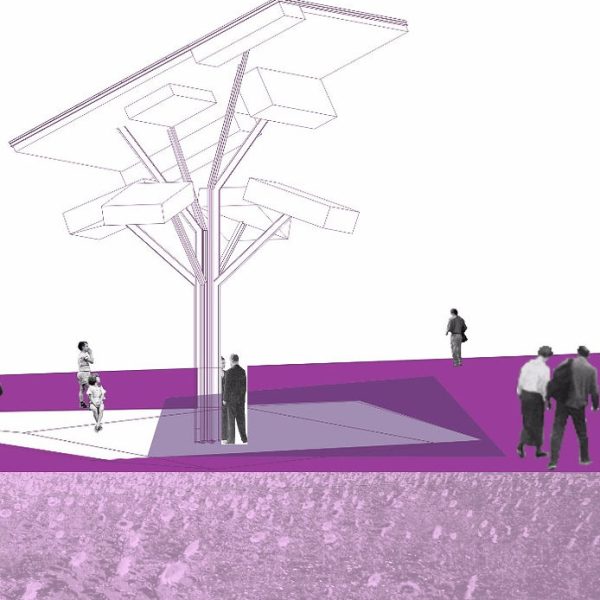Arbol Solar
Camino de la Reina. Sevilla, 2003.
Promoters: Seville City Council
Architects: Giudecca Arquitectos + Joaquín González Falcón.
"Some will say that the fallacious beauty created by penumbra is not authentic beauty... we create beauty by casting shadows in places that in themselves are insignificant... I believe that beauty is not a substance in itself but only a drawing of shadows, a play of dark lights produced by the juxtaposition of substances".The praise of the shadow. Tanizaki.
As in Tanizaki's quote, an attempt has been made to reconcile an architectural concept in which the idea of a tree is understood as a projection of shadows on the ground. The "Solar Tree" is based on an abstraction, which nevertheless in its material and constructive solution will facilitate the execution and economy of the piece.
To achieve this great shadow, the first project decision was to group the 56 photovoltaic panels needed in a single support plane, which in a rectangular shape, defines a great shadow.
An element that, however, is not completely opaque, to reproduce the heterogeneousness of the shadows produced by a tree. The support platform of the panels is perforated at different points of the grid, giving rise to the execution of boxes that allow light to pass through and allow the shade of the ground to be inhomogeneous.
The supporting structure of this large platform, suspended at a height of ten metres and with an inclination of 30º (to favour the maximum performance of the plates), is built with a type of trunk and branches (standardised IPN profiles), which in some cases reach the upper plate, and in others end up forming some perforated plate boxes.
The structure has therefore a fundamental role in the formal definition of the "Solar Tree", however, it has been wanted to reinforce its expressiveness by making the whole piece with standardized profiles of laminated steel, emphasizing its industrial character and the idea of prototype to which we allude in principle: For this purpose the structure is shown as it is with the only protection of a galvanization treatment.
In short, this piece aims to convert a strictly functional and industrial element -the support of a photovoltaic installation- into a playful experience, which transforms this element into urban furniture and an element of dissemination and knowledge of clean energies.







